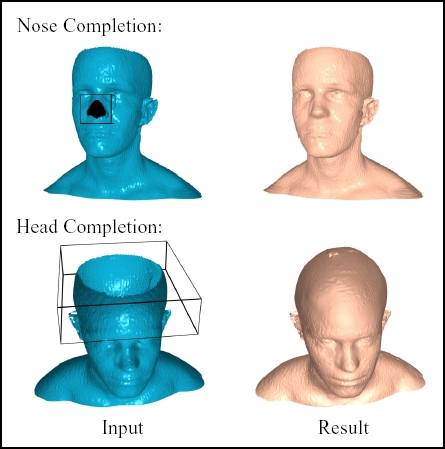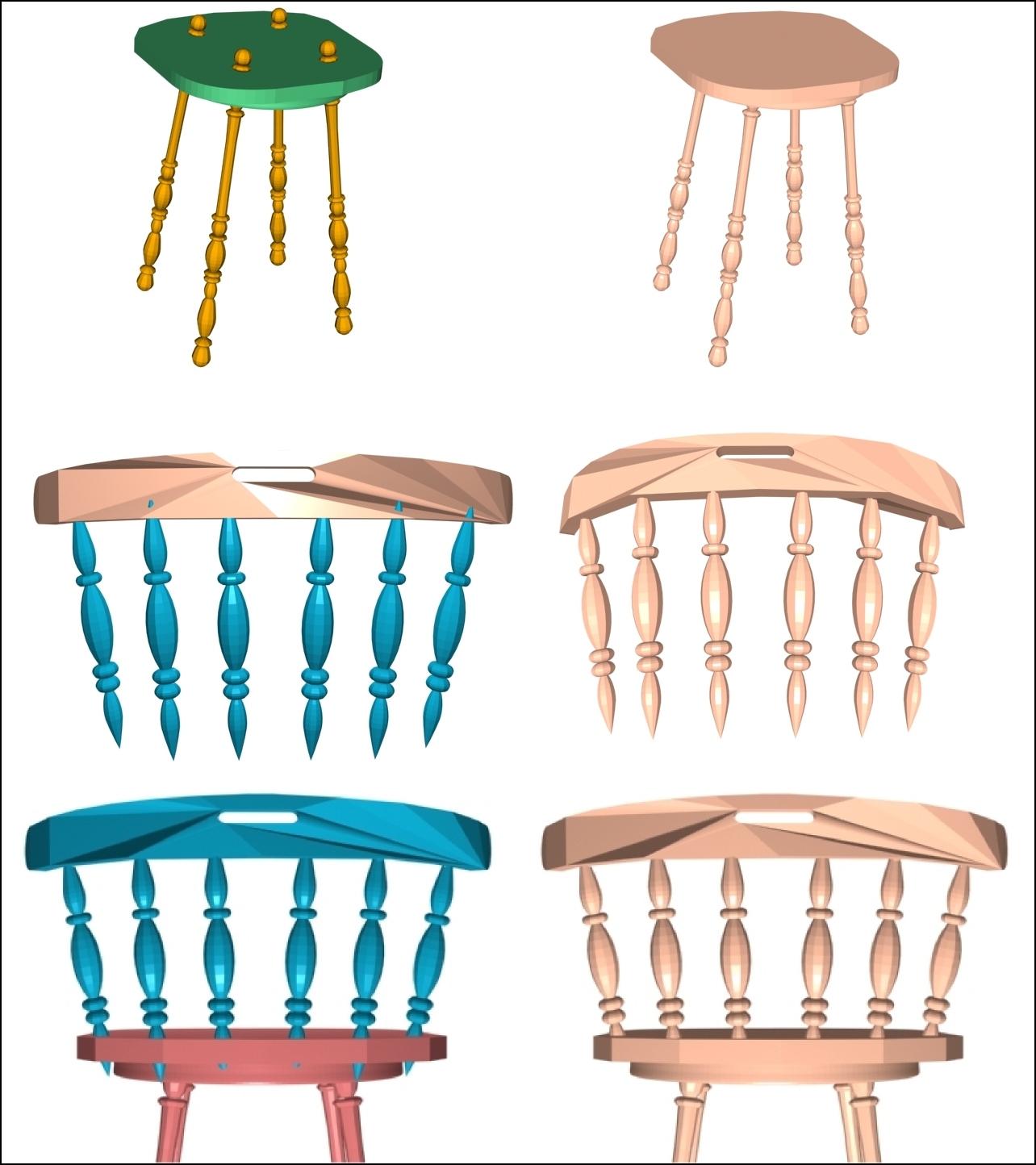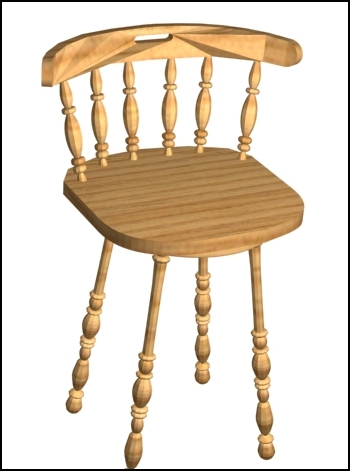Minimal-Cut Model Composition
T.Hassner, L.Zelnik-Manor, G.Leifman, and R.Basri
SMI'05
Best Student Paper Award
Abstract
Constructing new, complex models is often
done by re-using parts of existing models, typically by applying a
sequence of segmentation, alignment and composition
operations. Segmentation, either manual or automatic, is rarely
adequate for this task, since it is applied to each model
independently, leaving it to the user to trim the models and determine
where to connect them. In this paper we propose a new composition tool.
Our tool obtains as input two models, aligned either manually or
automatically, and a small set of
constraints indicating which portions of the two models should be
preserved in the final output. It then automatically negotiates the
best location to connect the models, trimming and stitching them as
required to produce a seamless result. We offer a method based on the
graph theoretic minimal cut as a means of implementing this new tool.
We describe a system intended for both expert and novice users,
allowing easy and flexible control over the composition result. In
addition, we show our
method to be well suited for a variety of model processing applications
such as model repair, hole filling, and piecewise rigid
deformations.
Full paper : SMI05_MinCutModelComposition.pdf (2,503kb). BibTeX.
Some Results
The Centaur

The man model, courtesy of Cyberware and Headus.

Composing Heads

Reversing constraints. From left to right: The two busts; The models overlayed; First example, taking the blue face and red head; Second example, reversing constraints, now choosing the red face and blue head. In both, top is the cut result (clipped models) bottom is the final result.
Both bust models, courtesy of Cyberware
Cerberus

Multi-step composition. Cerberus, the mythical guardian of the gates of hell, is created here in four steps. The top row shows overlays of the models used to create the result in each step (shown in the bottom row). In step 1 we deform the dog's head, turning it to make room for the other heads. Additional heads were created by cloning and rotating the whole dog. In each step we constrained the new dog's head and the existing dog's torso and nose(s). The tail was added by composing the existing tail with a serpent model (in blue).
Model Restoration

Model restoration. Fixing the scars and broken nose on the Igea artifact model, in three steps. (a) Input model and the user drawn boxes around the flaws. (b) Overlay of the input model and the aligned database bust model chosen to fix each flaw. (c) Clipped models. (d) Input (left) and result (right).
The Igea artifact model, courtesy of Cyberware.
Model Hole Filling

Hole filling. Artificial holes opened in a bust model by removing both the nose and the top of the head. These were automatically repaired in two steps. In each row on the left is the input model (with the user drawn box around the hole) and on the right is the final result (the little lump on the man's head is not an artifact. It is the tip of the cap worn by the scanned subjects in the database).
Bust models used for model restoration and holefilling are free samples from the CAESAR database.
Chair

Composing a chair. From top to bottom, the three composition steps in creating a chair. On the left are the models overlayed; on the right are the composition results. Note that in each step, multiple models (e.g., the four legs, the six back rests) were treated as one model and composed in a single step with an additional model (e.g., the seat).

The final chair result.
To
the Weizmann Institute of Science Home Page
Faculty
of Mathematics and Computer
Science
Computer
Vision Group
For questions and remarks please contact: Tal Hassner.
Confidential - Proprietary Information.